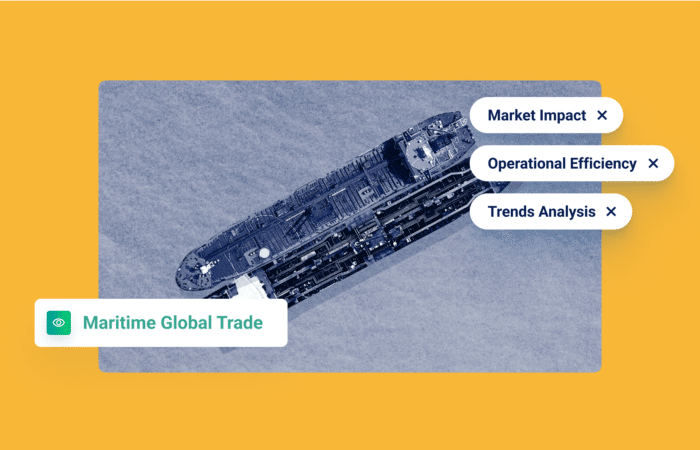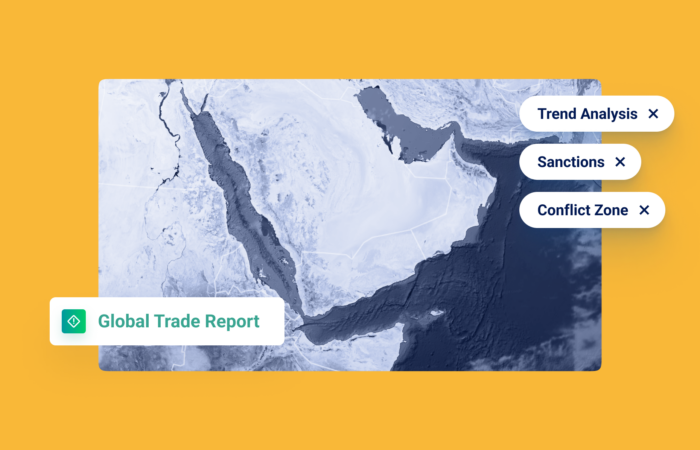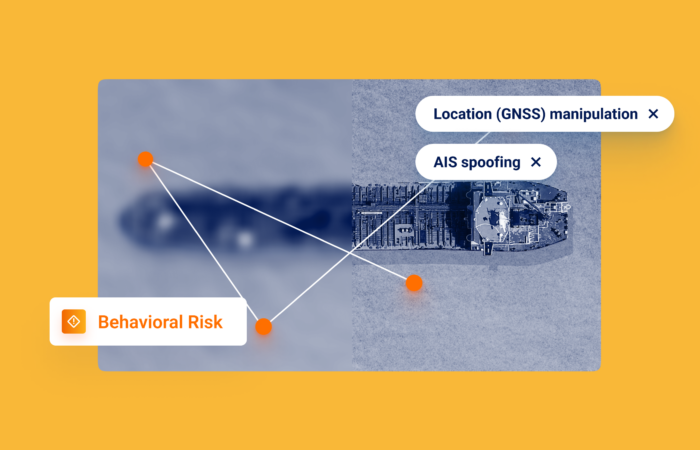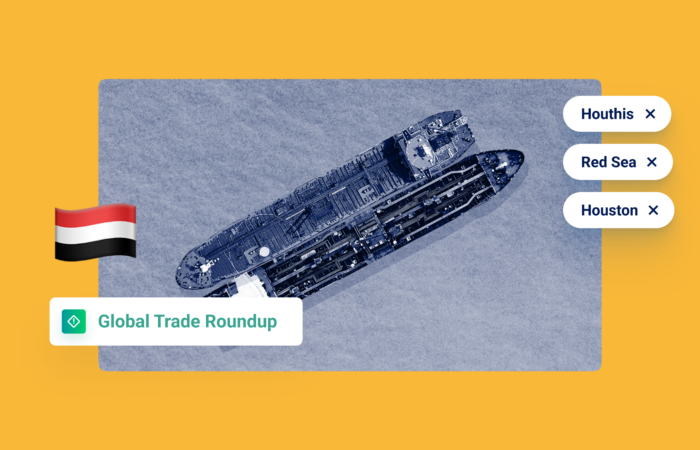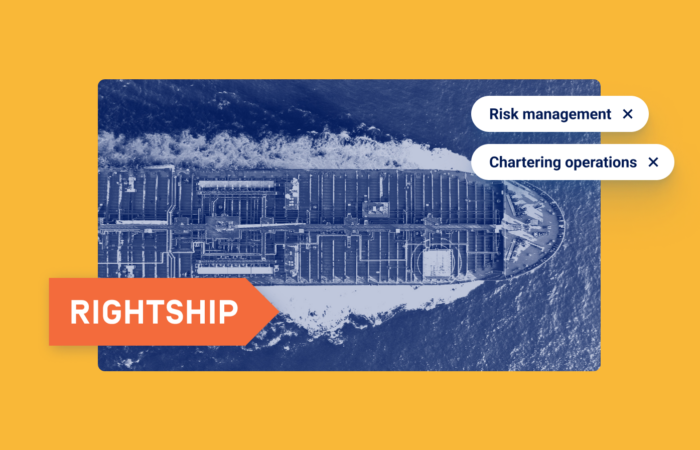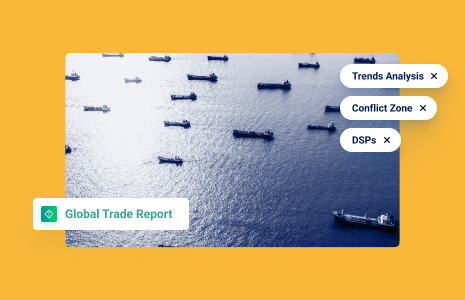What’s inside?
Maritime risk can come as an afterthought in compliance. But the collapse of Hin Leong made it clear for players in the physical commodity market that in order to fight fraud and trade-based money laundering (TBML) risk, there is a critical need to enhance maritime due diligence.
Maritime transport accounts for 90% of all traded goods. So you can look at the maritime domain as a mirror into global trade activity – both legitimate and non-legitimate. Sanctions is the most obvious connection to maritime, but organized criminal groups are increasingly taking advantage of trade activity to get away with fraudulent events, expanding maritime financial crimes risk to go beyond sanctions
However, as with any emerging risk, lack of awareness can cause limited and siloed remediation that doesn’t account for all aspects of maritime risk. So before deciding if to build or buy, it’s important to determine your maritime risk exposure accurately.
How?
Following OFAC’s advisory, the shipping industry has understood the need for identifying deceptive shipping practices. But a common misconception is that deceptive shipping practices are only relevant for sanctions evasion. When in fact, these practices are just as effective in facilitating illicit trade. What began as a term coined by the UN Panel of Experts has quickly become a tactic for disguising any kind of illegal practices at sea. And the intricate nature of global trade creates ample opportunities for exploitation by bad actors.
Dark activity is a great example. Areas where vessels go dark are not only limited to trafficking sanctioned goods but to drug operations as well.
Given these factors, having the right maritime risk discovery process is crucial.
Why now?
Over the last decade, regulatory fines for financial institutions have increased enormously – with AML-related fines alone exceeding $11 billion in 2020. Of greater concern to many financial institutions is the reputational cost of doing business with global bad actors. Major financial institutions have seen their stock price and revenues decline significantly after their financial crime compliance failures hit the news.
It’s up to financial institutions to understand exactly who they are doing business with, and they often use a 3rd party solution to perform risk screening. The screening process varies depending on the client’s risk profile and risk aversion. When it comes to maritime risk review, it can require extensive expertise, training, manual review times – all of which can cut into your bottom-line. And even at the end of an extensive investigation, compliance teams can still fall short of identifying the true risk level.
So how can you streamline maritime screening and easily add it to your compliance and risk mitigation workflows? To provide a path forward, you first need to understand the problem you’re up against.
A use case for maritime insights
How do you accurately account for maritime risk? One solution could be to use screening tools to create a list of high-risk alerts and then send these cases to sanctions list matching. However, list screening is prone to false positives. Further, as deceptive shipping practices become a standard in maritime due diligence, matching tools become obsolete. How do you detect behavioral risk practices across an average of 20 unique entities that are involved in each transaction?
In March, one of the world’s largest commodities trading houses reported that it was defrauded by a shipper and fell short of the promised $36 million consignment of goods. How could maritime insights have helped? Having visibility into maritime events is critical to differentiate between legitimate trade and potential fraudulent events. With only 3% of ocean freight physically inspected in the U.S, it is impossible to determine if goods exist in the right quantity and are priced appropriately compared to industry benchmarks. So what can you do? Maritime AI can help organizations reduce the effort and cost involved in critical decision-making. Some applications of this can be:
- Confirming the existence of all entities (vessels and companies) mentioned in the transaction
- Providing immediate clearance recommendations on vessels and commercial entities associated with the shipment
- Identifying risk indicators in real-time, for instance, deviation from the expected path of one of the related vessels
And of course, if the trade doesn’t even exist, then the shipment details can be cross-checked with real-time data before the damage is done. The bottom line? You should be able to look at transactions and understand if the vessel activity lines up.
Now that we’re familiar with how maritime comes into practice, what can you do to get started?
Integrating maritime risk in the form of dynamic matching
Imagine taking a list of 4,000 high-risk legal entities and automatically screening them against your historical transactions. This is about identifying entities at risk of designation at scale. In this way, teams can identify maritime risk exposure – without investing in the expertise.
What’s important here is that, unlike traditional matching tools, screening for entities that are not yet designated means that you are taking a much more holistic approach. Globally, there are approximately 10,000 unique individuals, entities, locations, and vessels sanctioned across 16 different major government regimes.
But that’s just the tip of the iceberg. Our data reveals that there are 6,379 medium and high-risk vessels linked to 8,111 unique companies. When including ultimate beneficial ownership, the exposure increases to 11,593 legal entities. So if you are only relying on tools that can detect sanctioned entities, you are missing the full scope of risk. And with ever-evolving risk typologies, you’ll find yourself always one step behind.
Identifying gaps in your risk discovery
Another approach is to leverage the right technology to understand what risk you may be missing or even misclassifying. Let’s say you are currently getting 500 alerts for high-risk entities on a volume of 20,000 transactions a month. Whether or not 500 is considered good or not, depends on your institution’s risk appetite. But what is important to understand is if you have a hidden problem of false positives, or on the flip side, risk that’s being left unaccounted for.
This is where maritime AI can help. Checking your book against a robust platform can seamlessly break down each transaction by risk level. With a comprehensive risk overview, you can then decide what actions to take based on these insights. It’s important to mention that AI tools can also be customized to your specific risk appetite and internal processes. For example, you can apply a certain rule across thousands of transactions if you don’t want a region or activity to trigger a review. This can help streamline the review of suspicious activities according to unique business requirements.
It doesn’t have to be a burden
There is no right or wrong answer to maritime risk discovery – it’s just a matter of getting started. However, the two approaches in this guide can help your institution discover new areas to investigate and identify where you’re covered and where you could benefit from more stringent controls.
Financial crime compliance has a lot to gain from maritime risk discovery. But onboarding new tools, updating processes, or changing your approach can feel overwhelming. You don’t need to become a maritime expert to onboard maritime AI. Once you have a good idea of your exposure, you can work with your tech partners to decide on the right solution for your business.


